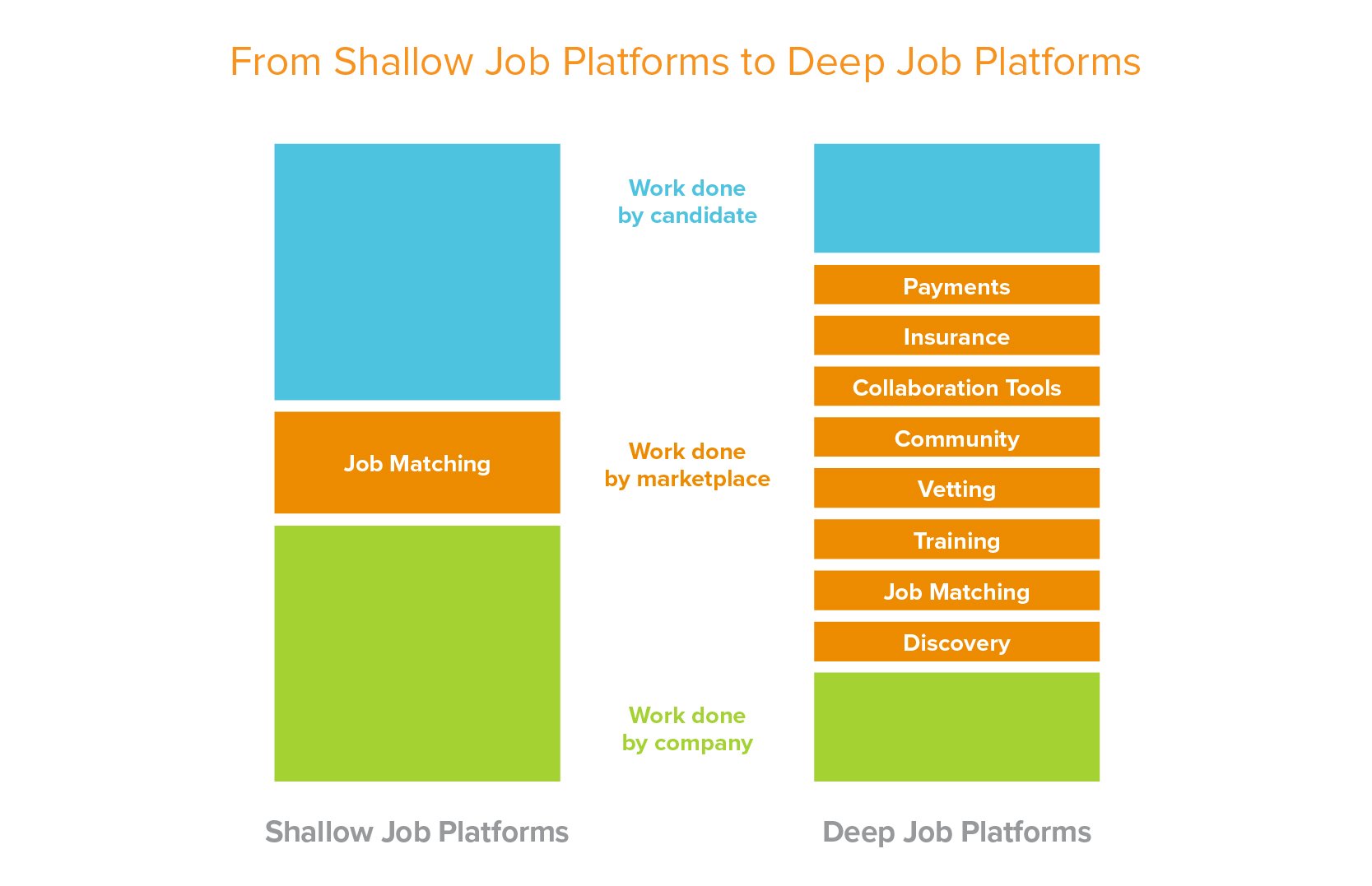'Deep' Job Platforms and How to Build Them
Looking for a job in the 2020s will be very different from looking for a job in the 2000s, or even the 2010s. In this new era of reduced budgets, open-ended hiring freezes, and a shape-shifting workforce of career changers, relocators, and solopreneurs, the concept of a resume and a job board seems comically antiquated. This antiquated system plays no small part in the current crisis, as millions of talented, hardworking people are in jobs (or, worse, without jobs) that leave them underutilized, under-engaged and undercompensated. We need to do better.
While COVID-19 has thrown the labor market in a state of chaos and uncertainty, it has also accelerated an evolution that has been years in the making: the rise of the “deep” job platform.
We previously espoused the need to transition from traditional job platforms like Indeed and LinkedIn to “vertical” job platforms that address the specific need of a particular industry or candidate. This vital focus is complemented by an expansion in services provided: from mere job matching to deeper platforms. These platforms not only connect candidates with employers, they also offer additional features designed to create long term success for the candidates, companies, and the platforms themselves. These features range from training to community to—in some cases—financial services.
In the wake of COVID-19 and the Great Rehiring, these deep job platforms will play a critical role in getting people back to work as soon as possible, in the best jobs possible.
Here, we expand on our vertical jobs thesis by revealing what this deep platform revolution looks like in labor and talent marketplaces, from the founder’s perspective. Below, we identify four tactics for entrepreneurs to pinpoint their offerings, develop their product, and successfully build the career platforms of the future.
Read more at a16z with Jeff Jordan

